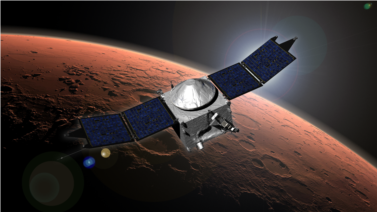
The United States plans to launch a new spacecraft on Thursday. The National Aeronautics and Space Administration plans to launch the Orion spacecraft from Cape Canaveral Air Force Station in Florida. The flight is expected to last four and one-half hours. The spacecraft is designed to carry people into space. But no astronauts will be on Orion. NASA scientists will use the flight to test the launch, control and reentry systems of the new exploration vehicle.
Space agency officials are closely watching weather conditions to make sure that the launch can go forward. Space launches take place within a “window” of time, which permits wind or other conditions to be within acceptable limits.
Recent spaceflight incidents raise concerns
The test of the Orion spacecraft comes after two setbacks in space exploration. Recent accidents have shown how difficult and dangerous space travel can be. In late October, an unmanned, privately-owned rocket exploded as it left NASA’s launch center on Wallops Island, Virginia. The Antares rocket was to carry tons of supplies to the International Space Station. The explosion has raised questions about the engine design used by Orbital Sciences Corporation, the company that built the Antares rocket. The incident is still under investigation.
Days later, a problem during the test flight of a manned spaceship resulted in a deadly crash in California. One pilot on Virgin Galactic’s SpaceShipTwo was killed and the other was seriously injured. Virgin Galactic is a spaceflight company. It plans to develop a space tourism industry by taking people into space for a fee.
Investigators are looking at the possibility that one of the pilots made a mistake by attempting to slow down the spaceship too soon. The head of the company, Richard Branson, has denied that he ignored safety warnings about the spaceship before the crash. The U.S. National Transportation Safety Board is leading the investigation into that accident.
Orion is NASA's return to manned spaceflight
For NASA, Orion represents a return to manned exploration of space after the retirement of the space shuttle in 2011. The agency hopes Orion will be able to carry humans to, what it calls, deep space: the Moon, Mars or beyond.
Orion has three main parts: the crew module, the service module and the launch abort system. When fully developed, the crew module will hold four astronauts. For this test flight, a United Alliance Delta IV Heavy rocket will carry Orion into space. NASA says this rocket will not be used for Orion’s manned spaceflights. A different rocket, called the Space Launch System, will be developed instead.
The space agency held a news conference two days before the planned launch date. Officials explained to reporters what NASA was hoping to accomplish with the test flight.
The officials noted that not all of the systems involved in Orion were ready. They said the main purpose was to test the control system for the spacecraft. Lockheed Martin Program Manager Mike Hawes said the aviation systems were ready and much of the computer software was complete. But, he said life support systems for astronauts were not ready and would not be part of the test.
Mark Geyer is the Program Manager for Orion. He told reporters that the test flight would cost over $370 million. The capsule will be reused for another test flight. He noted that Orion is still in the development stage. Scientists will closely watch the performance of the heat shield, which will protect the spacecraft as it re-enters the atmosphere at a speed of over 32,000 kilometers an hour.
NASA scientists are calling the test, Exploration Flight Test-1. They say Orion will travel 5,800 kilometers into space and orbit the earth twice before splashing down in the ocean.
I’m Mario Ritter.





